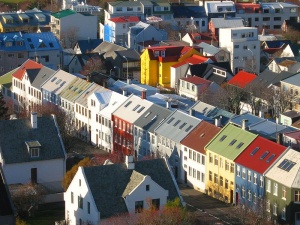Iceland tourism blooms following Eyjafjallajökull eruption

Tourism in Iceland has experienced unprecedented growth since 2010 resulting in a healthy rise in occupancy levels amongst the country’s hotel supply and prompting alternative accommodation to flourish, according to a new report from global hotel consultancy HVS. Car hire in Iceland makes it easy for anyone to explore the country at their leisure, and private home rentals have become widely available.
Media coverage of the volcanic eruption of Eyjafjallajökull in 2010 heightened global awareness of Iceland and its natural beauty, which, along with a sudden affordability caused by the depreciation of its currency raised its profile to foreign tourists, particularly those from the UK, US and Germany.
The country’s Keflavik International Airport has seen double-digit growth with arrivals and departures up 16 per cent in 2011, 19 per cent in 2014, and almost 25 per cent in 2015.
In the year-to-October 2016 growth was 34 per cent over the same period in 2015, with more passengers than the previous year as a whole.
This has been welcome news for a hotel sector that prior to 2010 struggled to achieve annual occupancies of 50 per cent.
ADVERTISEMENT
Achieved occupancies rose 36 per cent between 2010 and 2015, with those in the capital and outlying areas up 42 per cent.
In 2015 the capital region achieved an overall occupancy of 79 per cent, up from 55 per cent in 2010, while the whole of Iceland saw an average occupancy of 64 per cent, up from 47 per cent in 2010.
According to data provided by Benchmarking Alliance, the country’s capital Reykjavik is fast becoming one of the strongest performing cities in the Nordics with the highest occupancy in 2016 quarter one, the strongest rate in quarter two, and outperforming other Nordic capitals in quarter three.
Room supply has increased 11 per cent between 2010 and 2015, and by an annual six per cent in Reykjavik, where trendy lifestyle properties have opened such as 101, Hotel Bork and Canopy by Hilton.
The current development pipeline over the next three years of around 2,000 rooms still falls short of demand.
However, the HVS report warns that such an explosion of the sharing economy combined with a hefty hotel development pipeline could pose a threat to the hotel market, particularly if tourism growth were to slow, or even decline, forcing the hotel sector and the sharing economy to compete head-on.
This would result in a fall in hotel occupancies and average rates.
“The growth of Airbnb in Iceland hasn’t affected hotel occupancies yet, but it has created a low-cost alternative which can limit their ability to drive average rates during peak seasons, despite high occupancies,” commented report author Stephen Collins, senior associate, HVS London.
“Once hotel room supply begins to catch up with demand, it will prove to be an interesting to see whether hotels are able to reclaim the unaccommodated demand that had previously been forced into alternative accommodations when hotels were full.”

